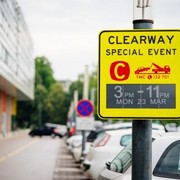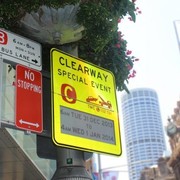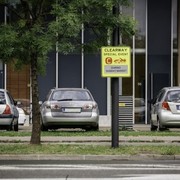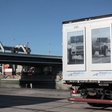
The content displayed on wireless e-paper traffic signs can be controlled and changed remotely. They are completely solar-powered and use incredibly small amounts of energy. This is also the first time that electronic ink (think e-books and Kindle, for example) has been used in traffic signage.
Have you ever thought about how many traffic signs you actually need to produce to direct traffic? And how many additional temporary signs you need to signal unexpected events, such as danger on the road ahead, or even special events, such as concerts or football matches? At the Slovenia-based company Visionect they gave it quite a lot of careful thought and developed a platform for managing e-paper traffic signs. Sydney recognized the potential and installed Visionect's highly innovative signage on its roads, becoming the first city in the world to do so.
Their traffic signs are easily adjustable, without any physical contact. According to Visionect, the wireless road signs communicate over the cellular network. They are powered by solar energy, so even if the city suffers an electricity breakdown, these traffic signs will continue to work without any disturbance. What about during the night? When it gets dark, a front panel light switches on automatically so the drivers are able to read the signs. Electrical power is only required for a brief amount of time, when the signs are getting wirelessly updated.
Reports claim the city of Los Angeles "puts up 558,000 temporary parking restrictions signs every year to the cost of $9.5 million". Visionect states they could save a lot of money, staff time and resources, if they implemented permanent e-paper signs with content easily customizable via cellular networks.
EPD, according to the company, uses up to 99% less power than an LCD and is appropriate for indoor and outdoor use. It assures low energy consumption and can be powered by alternative energy sources. Electronic paper with minimal environmental impact provides for outstanding visibility and the reading experience of printed text. Even when exposed to direct sunlight, the letters on electronic paper look crisp!
Like it is with all internet-related 'things', people are worried about what hackers might do to mess with the content on the remotely updated traffic signs, however Visionect claims they have taken care of this issue as any tamper attempts will trigger alerts and location coordinates of potential hackers will be revealed.





